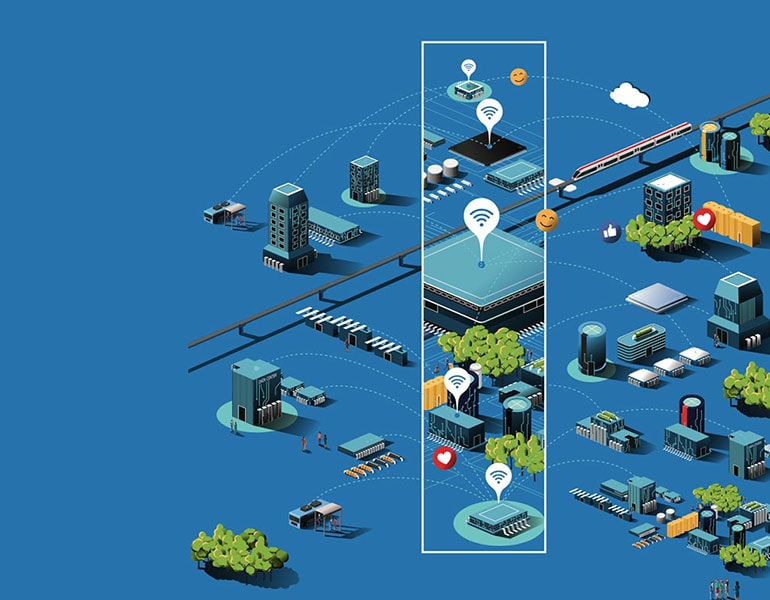Humanizing Healthcare
Build an ecosystem that is consumer-centric, convergent, and driven by next-gen technologies without losing sight of service quality, accessibility, and efficiency.
The digitization of health data, post 21st Century Cures Act, and the ubiquitous adoption of wearable technologies have ushered in an era where healthcare data is being generated on a minute-by-minute basis. Hence, the last decade has seen a surge in real-world data (RWD), which is generated every time an individual interacts with routine clinical care. This patient-level data is captured as part of EHRs, medical claims databases, registries, etc. More novel types of RWD include omics data, data from biopsies, diagnostic imaging, social determinants of health (SDoH), etc. Analysis of this RWD leads to real-world evidence (RWE) that drives actionable insights across the pharma value chain.
Biopharmaceutical companies are utilizing RWE to guide their product pipeline and portfolio strategy. For example, before product development, RWD can help to assess the commercial viability of early research by estimating disease prevalence and incidence. During product development, RWE can contribute to clinical trial design, clinical trial optimization, and patient recruitment. Let’s explore this in detail:
Clinical Trial Design: A recent study estimated a reduced sample size for phase III clinical studies, leading to substantial savings on cost and time as compared to sample size calculations without RWE.
Trial Optimization: TRWD is used to identify global healthcare sites that can accelerate patient recruitment and provide care to eligible patients. In contrast, for certain cancer types and rare-disease treatment, the optimal clinical trial sees more value in using a synthetic control arm, where RWD is used to match clinical trial patients, as against a placebo arm. Each of these actionable insights increases efficiency and accelerates drug development while saving costs.
Drug Approvals and Personalized Medicine: The US FDA has recognized the value of RWD and now accepts RWE as supportive evidence for decision-making on New Drug Application (NDA) and Biologics License Application (BLA). After a drug is approved, RWE can be leveraged to understand medication adherence, drug safety, cost-effectiveness, label expansion studies, etc. It can also evaluate the adoption of biomarker testing to enable personalized treatments. For example, RWE on biomarkers, such as EGFR, ALK, and BRCA mutation have shown clinical utility for selecting cancer therapy. There are ongoing efforts to see if biomarker testing has improved the long-term survival outcomes of patients.
Although it is exciting to see the widespread adoption of RWE in improving health outcomes, one should remember that the validity of these insights is highly dependent on the quality of the underlying data. RWD, as mentioned earlier, is collected from multiple sources in varied formats making it complex and heterogeneous in nature. Hence, FDA has set regulatory guidelines that serve as essential guideposts for the generation of real-world evidence (RWE). The best practices adopted with every RWE engagement require the RWD to be ‘Fit for Purpose.’ The global RWD community has made substantial progress in this regard ensuring data quality across four dimensions, i.e., volume, reliability, usability, and compliance.
It is crucial to understand how life science organizations, data vendors, and technology experts collaborate to adopt to rapidly evolving RWE strategies. A robust RWE generation encompasses various stages, such as real-world data acquisition, aggregation, standardization, data quality assurance, storage, advanced analytics, and governance. An effective RWD platform must be equipped to support both the functional and technical requirements at each juncture of this data journey. A predominant trend in the industry is the adoption of HIPAA-compliant cloud services at the enterprise level. This choice provides flexibility in architecture, enabling robust data management, advanced analytics tools, data visualization, and data cataloging.
To delve further into these components, data management covers the crucial steps from data ingestion to data entitlement, ensuring data integrity throughout. It addresses data quality issues related to formatting, missingness, and validity of specific data elements. It also ensures that access to data is controlled and complies with the data contract. Advanced analytics tools play a pivotal role in data wrangling, patient cohort creation, generating descriptive statistics, and building and deploying AI/ML models, all while maintaining meticulous data lineage. Visualization tools come into play for analyzing datasets, allowing a deeper understanding of patient journeys. Lastly, data governance must adhere to FAIR data principles, ensuring that the data remains Findable, Accessible, Interoperable, and Reusable.
This holistic approach, combining scientific rigor with technological advances has led to a richer landscape for real-world data and evidence generation. What was once a hypothesis has now evolved into practical applications in the RWD and RWE space. With strategic data partnerships, collaboration among domain experts, and support from technology partners, we have the potential to revolutionize healthcare with Real-World Evidence.







While cost optimization is an important part of FinOps, it's not the only focus of a successful FinOps program. Read this article to understand how you can utilize FinOps to achieve more than cost optimization.
Yearly strategic planning is key to success in Value-Based Care (VBC) implementation, powered by interoperability and data analytics. Continue reading to learn more about VBC.


Learn and understand the benefits of interoperability including optimized care efficiency and reduced costs.
Thought partners for business transformation and digital innovation caring for more than 1 million individuals in U.S.